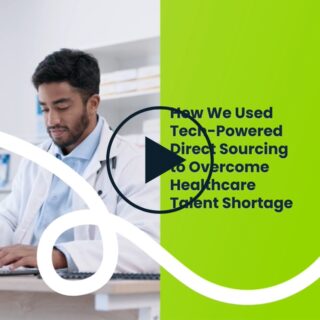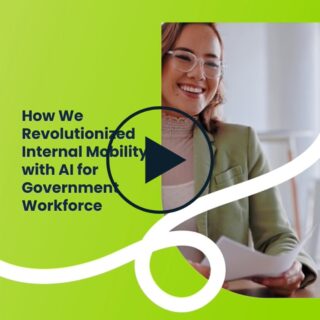According to a survey conducted by Harvard Business Review, 15 percent of respondents said they use “predictive analytics based on HR data and data from other sources within or outside the organization,” while 48 percent predicted they would be doing so in two years.
While organizations are increasingly incorporating data into the HR mix, there are still areas for improvement and to further adopt workforce analytics. Below, we outline some of the best practices for building an analytics-oriented workforce planning program along with some of the analytics processes essential for success.
Building an Analytics-Oriented HR Data Team
Organizations need to solicit input from a variety of stakeholders like talent acquisition program managers, human resource leaders, data specialists, budget and finance leaders and IT specialists to create a multidisciplinary team. When building your team, considering the following:
- Does your organization have an individual with experience and expertise in data analysis with the leadership skills to manage a workforce analytics team?
- Does the team you have assembled include analysts with data management, statistics and data visualization skills?
- Do you have your IT department’s support to choose the right tools to integrate HR data with other data sources in the organization?
- Can your team confidently present data-oriented solutions to senior leadership even if the solutions are counter to past workforce plans?
Collecting the Right Data
Collecting essential data points is a key step in a data-driven HR program. The data needed for analysis may come from multiple divisions within an organization. Organizations need to communicate the importance of sharing data with leaders organization-wide. Evaluating current internal HR data can help organizations identify future needs and draft a workforce strategy around them. Below is a list of data needed for workforce analytics.
Internal HR data:
- What are the demographics of the current workforce? (Gender, ethnicity, disabilities, full/part-time, etc.)
- How many people work in each position?
- Where are positions located?
- What is the employee to supervisor ratio?
- What are the pay rates of current employees?
- What is the likelihood of attrition through retirement?
- What recruitment activities have been completed in the last two to three years?
- What recruitment activities and resources were used?
- How many qualified applicants were found?
- Where did the most qualified applicants come from?
- What do new employees think of your recruitment practices?
- How many employees are needed to fill each position?
- What knowledge, skills, competencies and abilities are needed to perform anticipated job functions?
- What processes could be done more efficiently or effectively?
- What are the organization’s strategic objectives?
- What are the organization’s diversity objectives?
External Data Sources
Many organizations have inward-focused approach to workforce analytics and HR data and do not take into account what is going on outside the organization. The labor market is rapidly changing. Labor market data can inform organizations about talent supply in different locations and provide critical market intelligence on issues like competitiveness and salary range.
Data and job projection reports from the U.S. Department of Labor’s Bureau of Labor Statistics, for example, can lead to a better understanding of the supply and demand for essential occupations and the competitiveness of the job market.
Putting HR Data in Action
Organizations should take the insights gained through workforce analytics initiatives and develop a workforce plan to fill the gaps between current and future hiring needs. Some strategies and considerations when drafting a data-oriented workforce plan include:
- Plan for employees to receive skills training when needed to prepare for changing roles within the company.
- Hire and retain employees with skills that are critical to the success of the business.
- Create programs focused on employee retention.
- Increase efficiencies in recruitment and hiring processes by proactively identifying vacancies through succession planning and forecasting future business requirements.
- Identify training needs, classification and compensation issues, organizational or position changes that may affect employee retention.
- Create workplace diversity strategies to reach organizational diversity goals.
Managing a Workforce Analytics Program and HR Data
Workforce analytics is a continuous process that is highly susceptible to changes in the economy and labor market. To stay on top of new developments, organizations need to ensure their workforce analytics process is managed properly. Below, we share advice on how to best manage a workforce analytics program.
Prioritize Business Goals
For workforce analytics to drive real value, it has to be aligned with an organization’s business goals. Everyone contributing to workforce analytics process needs to be briefed on the overarching business strategies, so they can understand how their analysis contributes.
Common workforce goals include:
- Reduce turnover on a particular team or organization-wide
- Retain high-performing individuals
- Improve staffing and recruiting efficiency
- Lower the cost of operations
- Ensure the organization has talent aligned to expansion plans or planned new product offerings
Stakeholder Management
Because workforce analytics involve stakeholders from HR, finance, IT and others within an organization, clear and open communication should be emphasized early in the process. This will help stakeholders and their teams understand expectations up front and establish relationships between teams for success.
Data Quality
At the start of a workforce analytics initiative, it makes sense for organizations to conduct basic data hygiene practices like assessing the quality of data, gauging the need for data clean-up and documenting data-gathering and reporting processes.
Data Governance
Because employee data is personal, privacy rules must be respected. Proper data governance should be the responsibility of everyone involved in workforce analytics. However, someone should be assigned ownership to ensure that data and HR teams are following the processes established for data security.
Flexibility
Economic and business climates are not static; even the best workforce analytics program may miss emerging talent shortages or inadequately take certain contingencies into account. To make sure workforce analytics program reflect the latest internal and external developments, organizations should regularly re-calibrate and revise assumptions made from previous HR data analysis.
RPO Providers Can Assist Organizations with Workforce Planning, HR Data and Analytics
There is no one-size-fits-all workforce planning program, even for global organizations that have similar needs. What’s right for one organization may not be what another organization needs.
However, workforce planning does not have to be mysterious or complex. Organizations more than likely have a lot of the data they need, it is just a matter of creating the right management and reporting practices to interpret the data in meaningful ways.
The right RPO partner can help organizations make sense of their workforce analytics with their experience and deep understanding of labor market data and trends. An RPO partner can also work with an organization to create methodologies adapted to suit their needs. Click here to learn more about PeopleScout’s RPO solutions.




